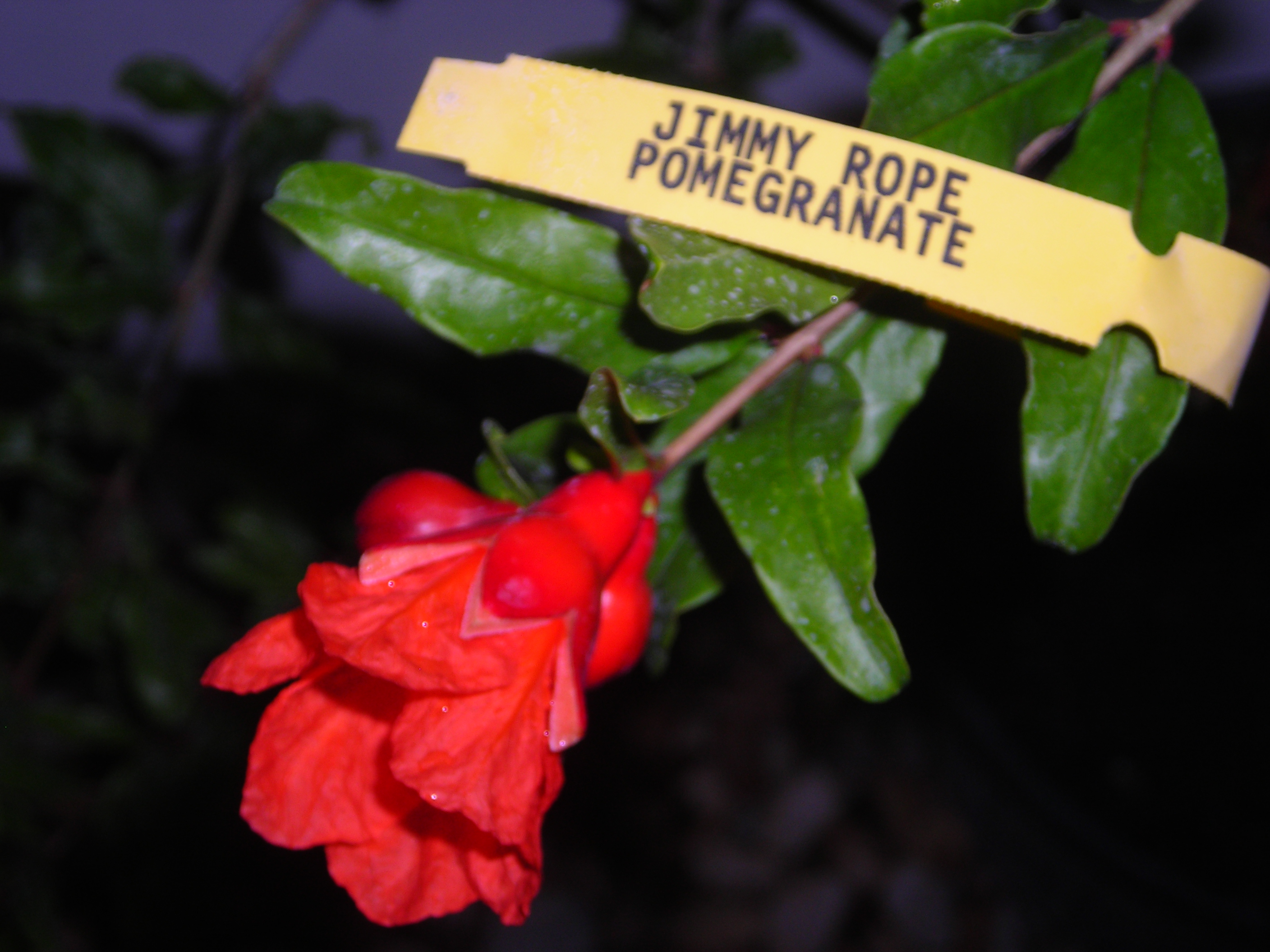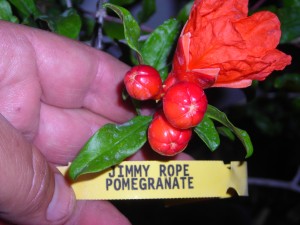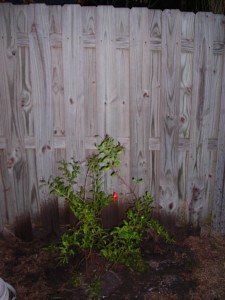 A blank fence….a shovel…and a kid that loves pomegranates.
A blank fence….a shovel…and a kid that loves pomegranates.
Plant it! Water daily for a month, then wait.
- Pomegranates are becoming more common in Florida, and one extension class I attended, there was much talk of pomegranates replacing the ailing citrus industry.
- Pomegranates are drought-tolerant, and can be grown in dry areas with either a Mediterranean winter rainfall climate or in summer rainfall climates. In wetter areas, they can be prone to root decay from fungal diseases.
- They are tolerant of moderate frost, down to about 14 °F.
- Insect pests of the pomegranate can include the pomegranate butterfly and the leaf-footed bug.
- Pomegranate grows easily from seed, but is commonly propagated from 25–50 cm hardwood cuttings
- Pomegranates can be grown from seed, but should be propagated from cuttings to ensure fruit quality and characteristics, and to avoid the genetic variation of seedlings.
- Pomegranate trees are self-fruiting, so a second tree is unnecessary for fruit production.
A tip on how I remove the edible part (called an aril):
So go plant a tree, and make it a pomegranate. My daughter will eat any spares you may grow
db



